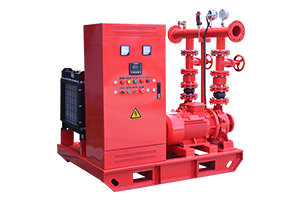Why Fire Pumps Fail During Emergencies (and How to Prevent It)?
Fire pumps are crucial components in ensuring fire protection systems function during emergencies. However, even the most reliable fire pumps can fail when they’re needed the most. In this article, we’ll explore the common causes of fire pump failure and provide actionable steps you can take to prevent these failures and ensure your fire protection system works effectively when every second counts.

1. Lack of Regular Maintenance
One of the most common reasons fire pumps fail during emergencies is inadequate or lack of maintenance. Over time, components like valves, seals, and bearings can wear out or become obstructed. Without proper maintenance, these issues often go unnoticed until an emergency arises.
How to Prevent It:
Implement a strict maintenance schedule that includes regular inspections, lubrication, and replacement of worn parts. Ensure that your fire pump system is checked by certified professionals who can identify and address potential issues before they become critical.
2. Power Failure
Fire pumps, especially electric pumps, rely on a constant power source to function. Power failure due to electrical issues, damage, or even human error can render the pump inoperable during an emergency.
How to Prevent It:
Install a backup power supply such as a diesel engine pump or a battery backup system. Additionally, ensure that power connections are robust, and emergency power systems are regularly tested to guarantee they function when needed.
3. Incorrect Sizing of Fire Pump
Choosing a fire pump that is either too small or too large for the system’s requirements can lead to pump failure. An undersized pump may not provide sufficient water pressure during a fire, while an oversized pump can cause unnecessary wear and energy consumption.
How to Prevent It:
Ensure that the fire pump is correctly sized for your building or facility's fire protection needs. Consult with fire safety engineers or professionals to calculate the appropriate size based on flow rate, pressure, and system demand.
4. Water Supply Issues
Even if the fire pump itself is functioning properly, a lack of adequate water supply can lead to pump failure. Issues such as clogged water lines, insufficient water supply, or water contamination can cause fire pumps to malfunction.
How to Prevent It:
Regularly inspect water supply lines to ensure they are clear of debris and contaminants. Ensure there is always an adequate water source available for the fire pump, and maintain a consistent water flow.
5. Improper Installation
If a fire pump system is not installed correctly, it may not operate efficiently or could fail during an emergency. Improper pipe alignment, inadequate pressure testing, or insufficient system integration are common installation errors.
How to Prevent It:
Work with certified fire protection specialists during installation and ensure all standards and local codes are followed. Perform thorough testing of the system after installation to confirm it functions properly.
6. Human Error
Human error, whether during routine maintenance or in the heat of an emergency, can also lead to fire pump failure. Mismanagement of valves, incorrect settings, or failure to operate the system correctly can prevent the pump from working when needed.
How to Prevent It:
Provide regular training for personnel on the proper operation and maintenance of the fire pump system. Ensure that emergency procedures are well-understood, and conduct drills to prepare staff for high-pressure situations.
Conclusion
Fire pumps are critical to the safety of buildings and facilities during emergencies. Understanding the common causes of fire pump failure and taking preventative measures can significantly reduce the risk of failure when every second counts. By prioritizing regular maintenance, backup power solutions, correct sizing, and proper installation, you can ensure your fire protection systems are always ready to perform when needed most.






